



INTRODUCTION: About Foundational Massage Techniques Library offers an overview of our online video library designed to teach essential massage therapy skills. In this short introductory video, discover how the video series/library guides you through core techniques, providing a strong foundation for effective, professional practice.

Brushing is a gentle massage technique which involves long, sweeping strokes applied lightly with the palms and fingertips, directly over the draping. This method is often used as a closing stroke, at the end of the treatment, to further soothe the nervous system and promote relaxation.

Tapotement is an over-the-draping, rhythmic massage technique that involves light, rapid tapping, cupping, or percussive movements. Performed with the edges of the hands, fingertips, soft fists, or cupped palms, this method is designed to stimulate circulation, invigorate the muscles, and enhance nerve activity. Tapotement is often used to energize the body, loosen tight muscles, or as a finishing technique to leave clients feeling refreshed and revitalized.

Vibration massage is an over-the-draping technique that involves rapid, oscillating movements applied to muscle bellies and to deeper, underlying tissues. These movements are typically created using the hands and fingers to stimulate nerve endings, improve circulation, and relax muscles. Vibration massage is often used to reduce tension, relieve pain, and provide a soothing sensation, making it a versatile method in therapeutic and relaxation-focused sessions.

Friction massage is a focused technique that uses deep, circular, or linear movements to target specific areas of tension or adhesions. By applying consistent pressure with the fingertips or thumbs, this method helps prevent and break down adhesions or scar tissue, increasing mobility to both muscles and joints. Friction massage is especially effective for addressing localized pain and enhancing mobility in tight or restricted areas.

Stripes is a technique that uses the thumbs (side by side, or thumb on top of thumb) to glide in the direction of muscle fibers in order to outline their borders, improve circulation and promote relaxation. Stripes is a more focused technique used to effectively treat target areas that are adhered by using smooth, gliding strokes in a straight line (thus its name of “stripes”).

A variation of effleurage, forearm techniques are used to apply gentle (or deeper) pressure over larger muscles in the body. With sustained pressure, the therapist will slowly glide over the muscle fibers in order to stretch and widen the muscles. Using the forearm allows the therapist to cover a wider area of the body and/or apply deeper pressure. This technique is particularly effective for loosening tight muscles and increasing relaxation.

Flat back-of-hands is a variation of the classic petrissage technique that focuses on using the backs of hands to apply pressure while gliding in the direction of the muscle fibers, in order to stretch and widen the muscle. This technique is particularly effective for loosening tight muscles and increasing relaxation, making it a versatile tool in a massage therapist's repertoire.
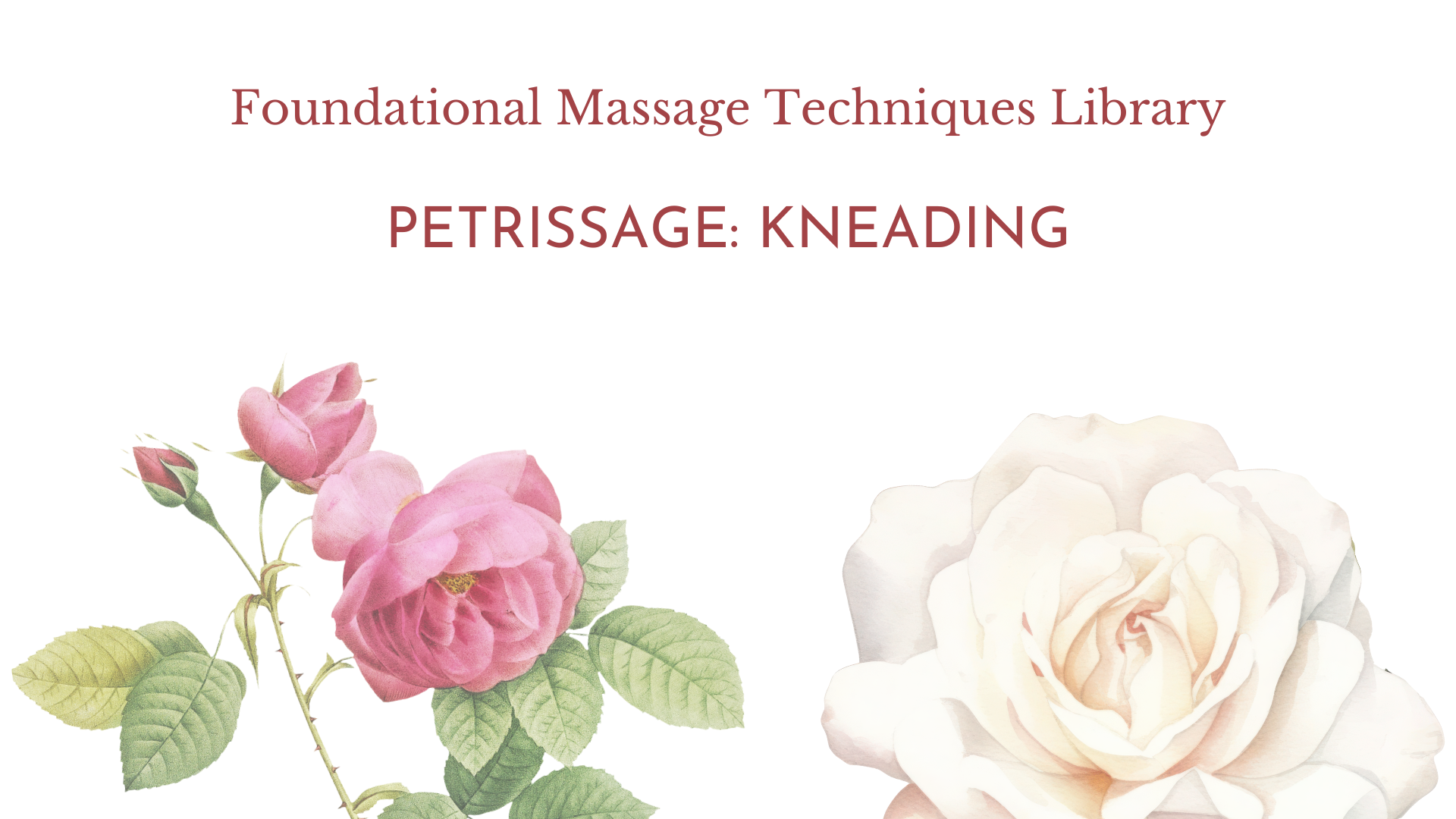
Kneading petrissage is a massage technique that involves rhythmically lifting, squeezing, and rolling the muscles using the hands and fingers. This method targets deeper layers of muscle tissue to enhance blood flow, release tension, and improve overall muscle elasticity. Ideal for relieving stiffness and promoting relaxation, kneading is a fundamental technique in therapeutic massage practices.

Pick-up Petrissage is a massage technique that involves lifting the muscles in a rhythmic manner. Using the hands or fingers, the therapist gently lifts the muscle tissue away from the underlying structures, then releases it to encourage relaxation and improve circulation. This technique is effective for loosening tight muscles, reducing tension, and enhancing flexibility, making it a fundamental component of therapeutic massage.

Spreading is a variation of the classic petrissage technique that focuses on separating and widening the muscle fibers. Using firm yet gentle movements, the therapist applies pressure while compressing the muscles outward to enhance circulation, release tension, and improve flexibility. This technique is particularly effective for loosening tight muscles and increasing relaxation, making it a versatile tool in a massage therapist's repertoire.
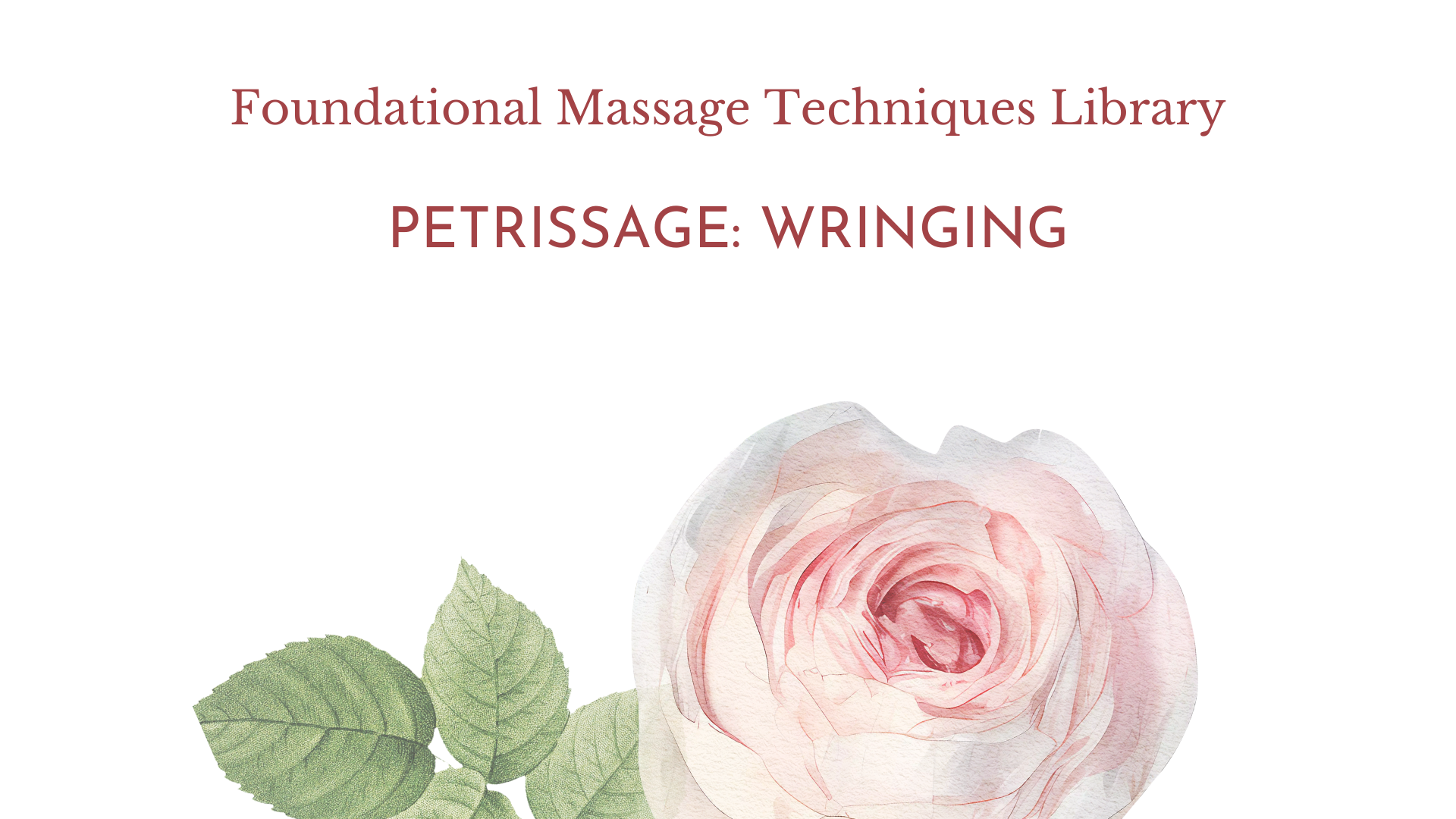
Wringing is a massage technique that involves gripping, lifting the muscle belly and twisting movements, applied with the hands working in opposite directions. This technique is designed to stretch and mobilize the muscles, increase blood flow, and release tension in deeper layers of tissue. Wringing is particularly effective for warming up large muscle groups and improving flexibility, making it a valuable addition to any massage session.

Alternating Hands Petrissage is a foundational massage technique similar to fanning, which is characterized by smooth, gliding strokes applied with alternating palms of hands that fan outward. This technique is used to warm up muscles, improve circulation, and promote relaxation. Alternating hands technique may be applied after the traditional effleurage, creating a calming rhythm while easing tension and preparing the body for deeper techniques.
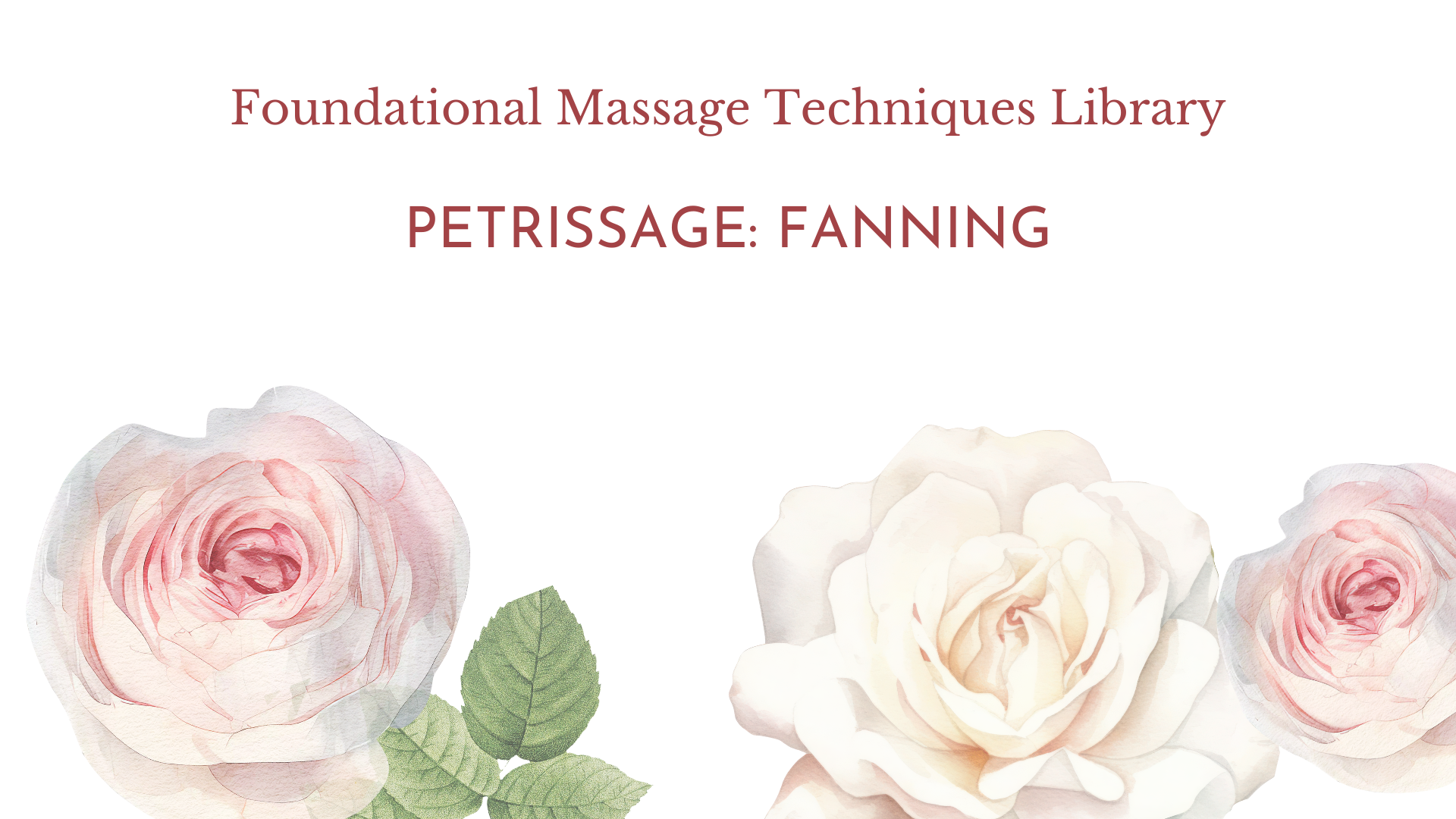
Fanning Petrissage is a foundational massage technique characterized by smooth, gliding strokes applied with the palms of hands that fan outward, in a synchronized motion. This technique is used to warm up muscles, improve circulation, and promote relaxation. Fanning may be applied after the traditional effleurage, creating a calming rhythm while easing tension and preparing the body for deeper techniques.
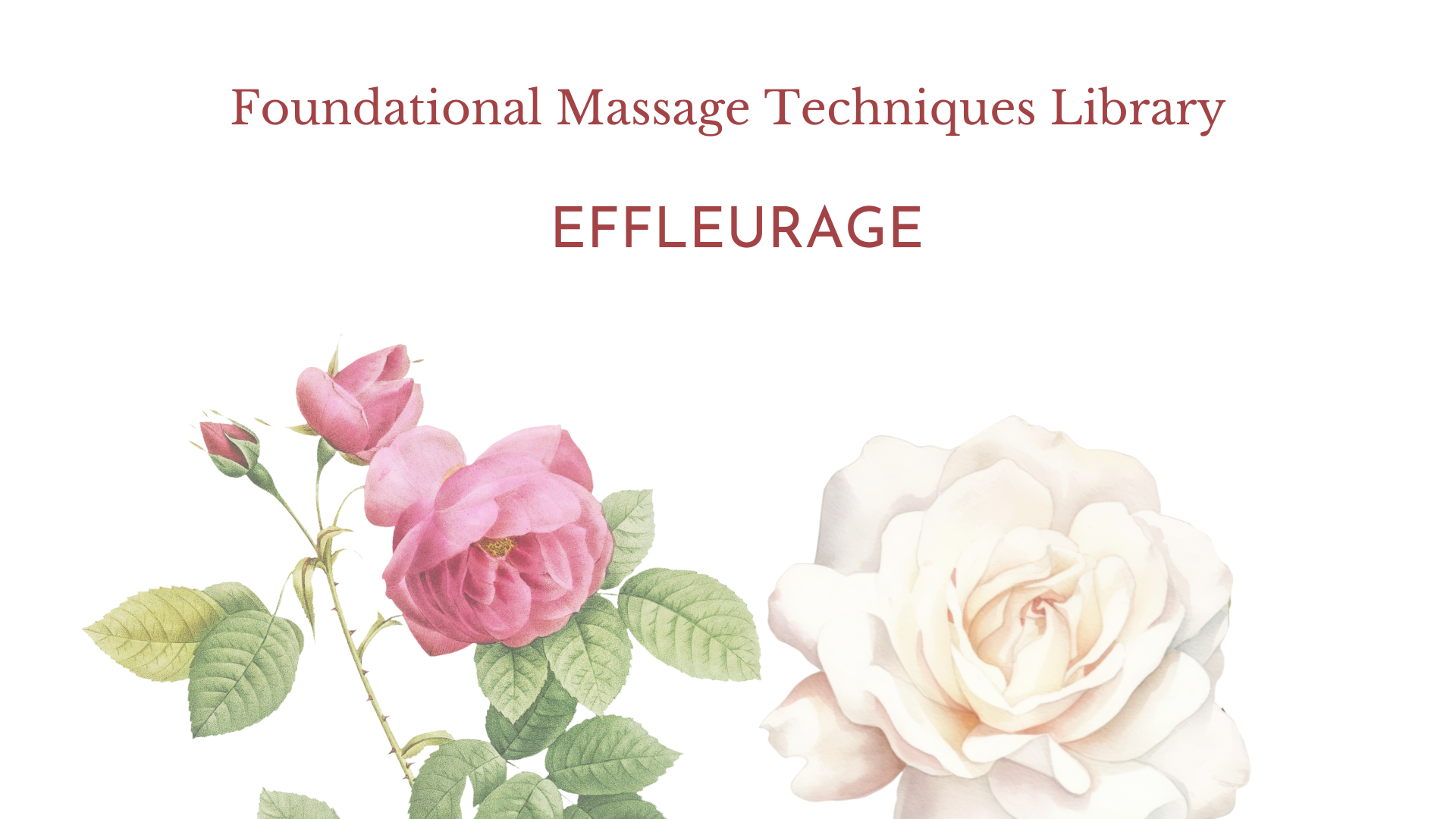
Effleurage is a foundational massage technique characterized by smooth, gliding strokes applied with varying pressure. Typically performed with the palms, fingertips, or forearms, this technique is used to warm up muscles, improve circulation, and promote relaxation. Effleurage is performed directly on the skin to apply lubricant to the body and is the starting and finishing technique in a massage session.
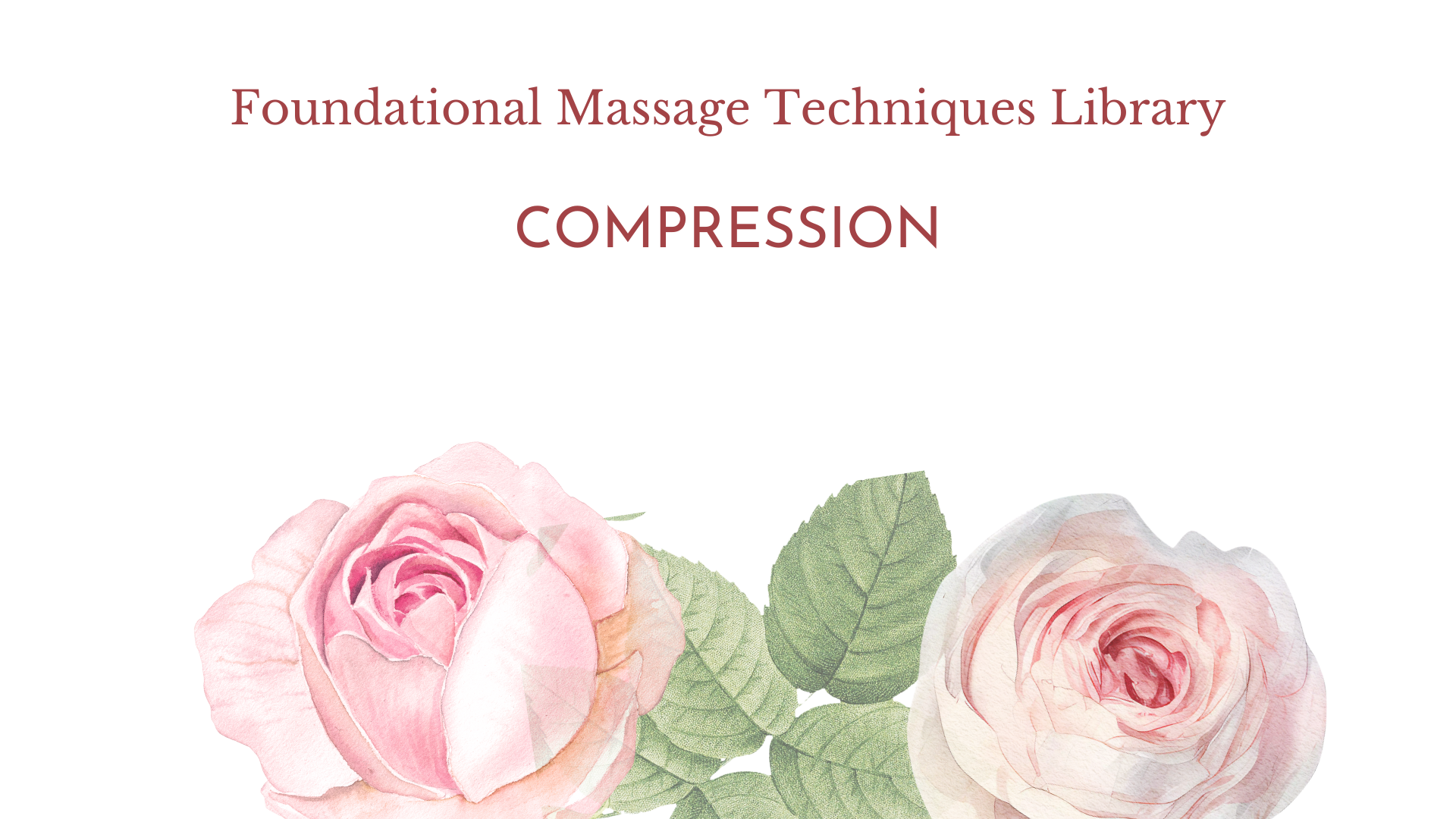
Compression massage is a technique that involves applying steady, rhythmic pressure to muscles using the hands or the palms, and done over the draping. This method works to increase circulation, reduce tension, and enhance the pliability of the muscles without the need for oil or lotion. This technique is used in the beginning of the massage session to introduce the client to the therapist’s touch and as an investigative tool for the therapist to become acquainted with the quality of the tissue.

Jostling is a dynamic technique that involves shaking or vibrating movements applied to a limb or muscle group. By gently lifting and shaking the tissues, this method helps release tension, relax muscles, and increase joint mobility. Jostling is often used as a preparatory or finishing technique in massage sessions to enhance relaxation and improve overall body awareness.

Rocking is a soothing technique that involves gentle, rhythmic movements to create a swaying or rocking motion in the body. This method helps release tension, promote relaxation, and encourage a sense of balance within the nervous system. Rocking technique is always applied directly over the draping and may be used in the beginning of the session, right before transitioning the client from prone to supine, or at the end of the session.